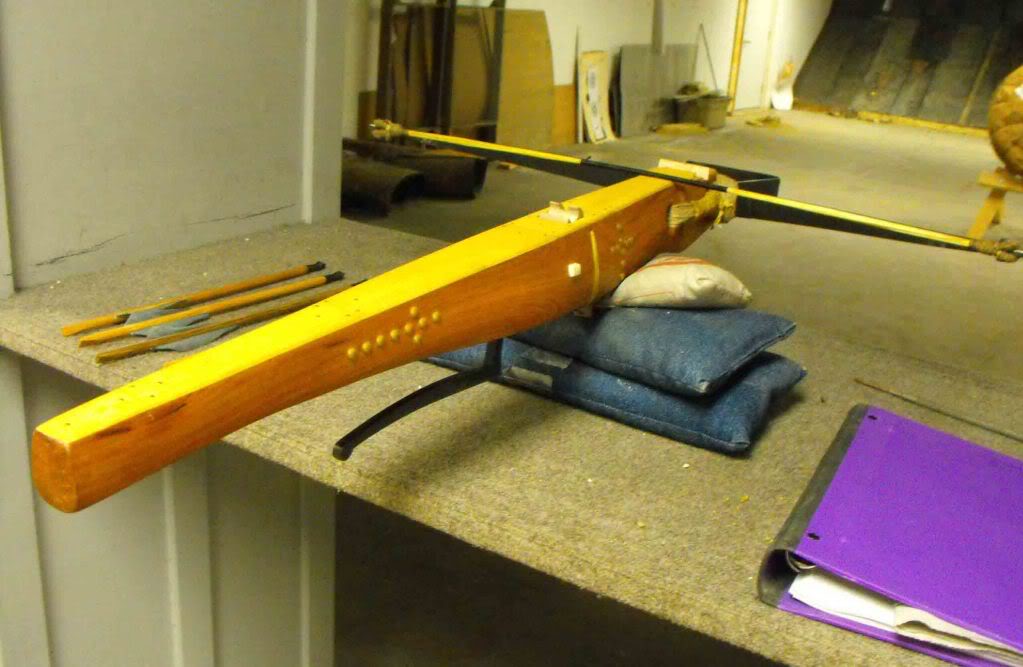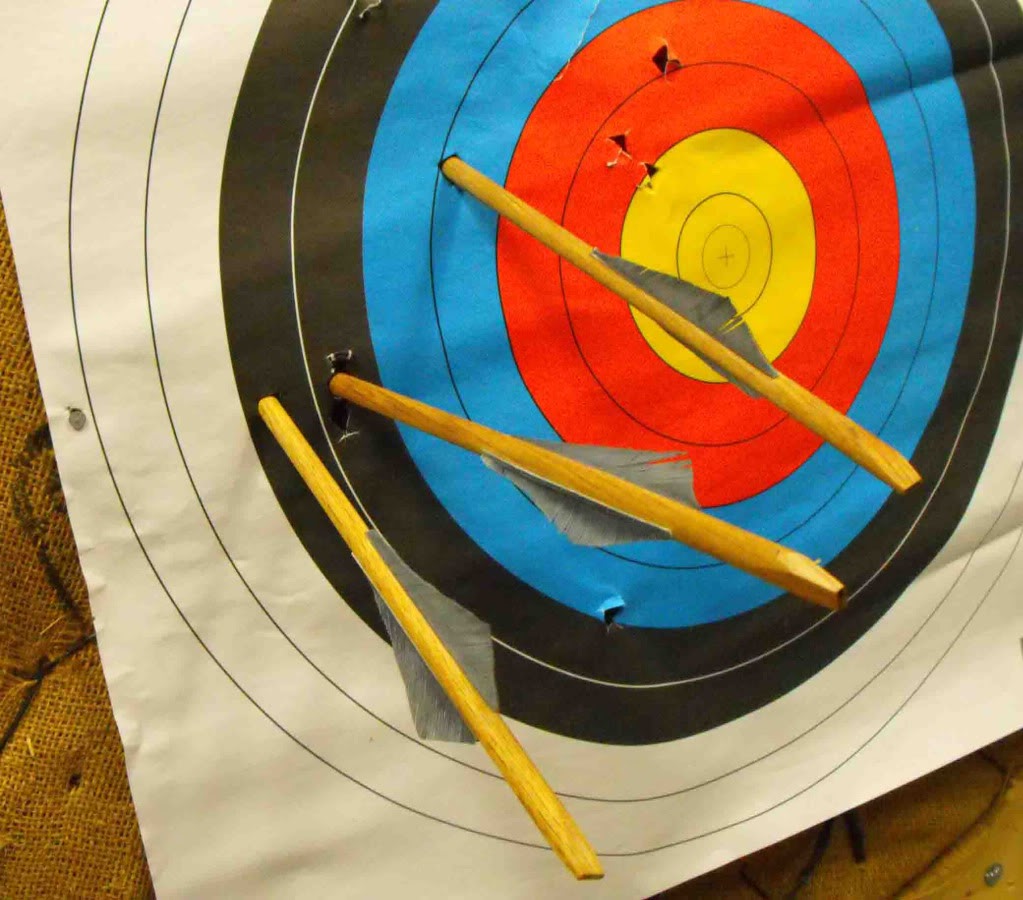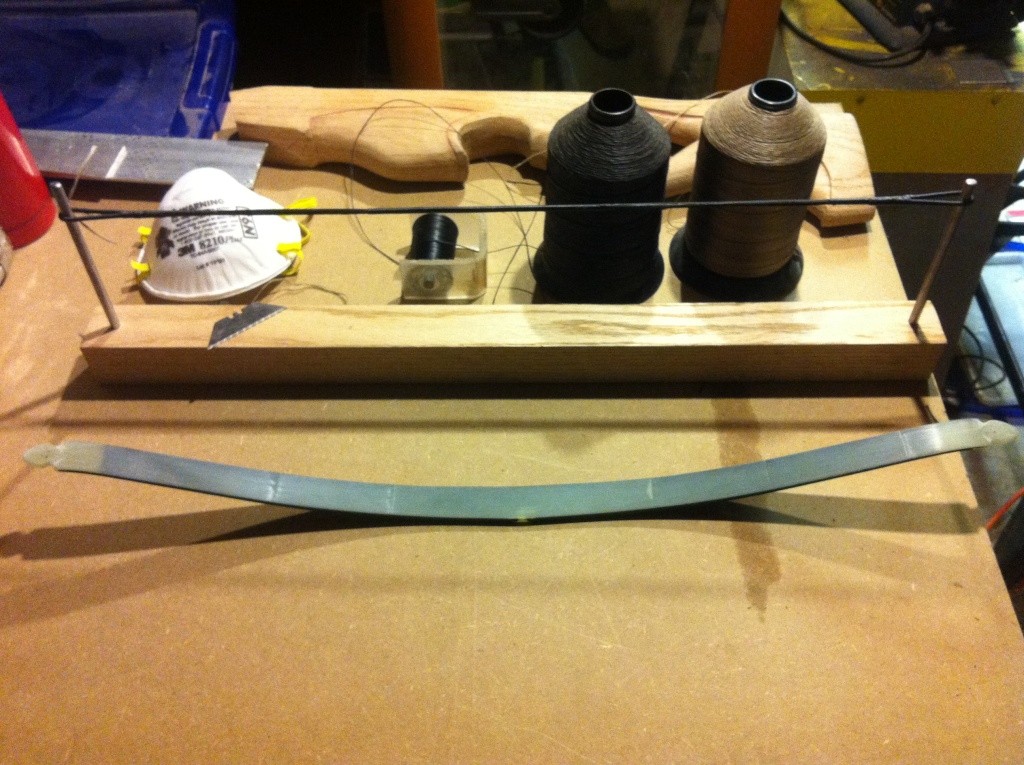



Hi, all. The crossbow is nearly finished, minus some adjustments and refinements. Overall, I learned a great deal on this project, and am ready to begin my next project, a Swiss bow.
Overall, I am pleased with this bow. I ended up getting a 100 lb. prod from Alchem, and am pleased with the power it produces. When testing yesterday on my club’s indoor range, I was getting an average of 4” of penetration using 3/8” oak bolts with 125 grain heads and two fletching (lots of refinements in the bolt making area is ahead of me) on a traditional round hay archery target. I shot mostly from the bench with sandbags, but did some freehand shooting at 12 and 25 yards, and for having never shot a crossbow, let alone one I built, I think I was getting okay groupings. The photos showing shot groupings are a 12 yards and then 25 yards, on a standard FITA target. I was averaging 4” of penetration at both ranges.
I have to do major work on the roller nut socket (or be more careful is more like it, as this one I am not all that pleased with, so the nut is a bit loose (not much, but enough, details can be provided). When I first shot this bow, I had made the string too low on brace, so it shattered my bone quarrel rest and tore up a bit of the table facing when the rest was struck (dovetailed in, you know). I made a shorter string bracing at almost 4”, and it performed fine this time.
I have no idea how fast this bow is, as I don’t own a chronograph. Maybe I can borrow one later, though. Certainly faster than a typical self bow.
I did a tiny bit of distance shooting, and got the bolts maybe 120 yards (more accurate distance testing is in the planning stage).
So, I consider this a success. I have always considered this weapon a testing ground to learn new processes and techniques, and expected to make mistakes and do re-dos. In that respect, I feel 100% satisfied.
Thanks for reading,
Dane













 Private messages
Private messages